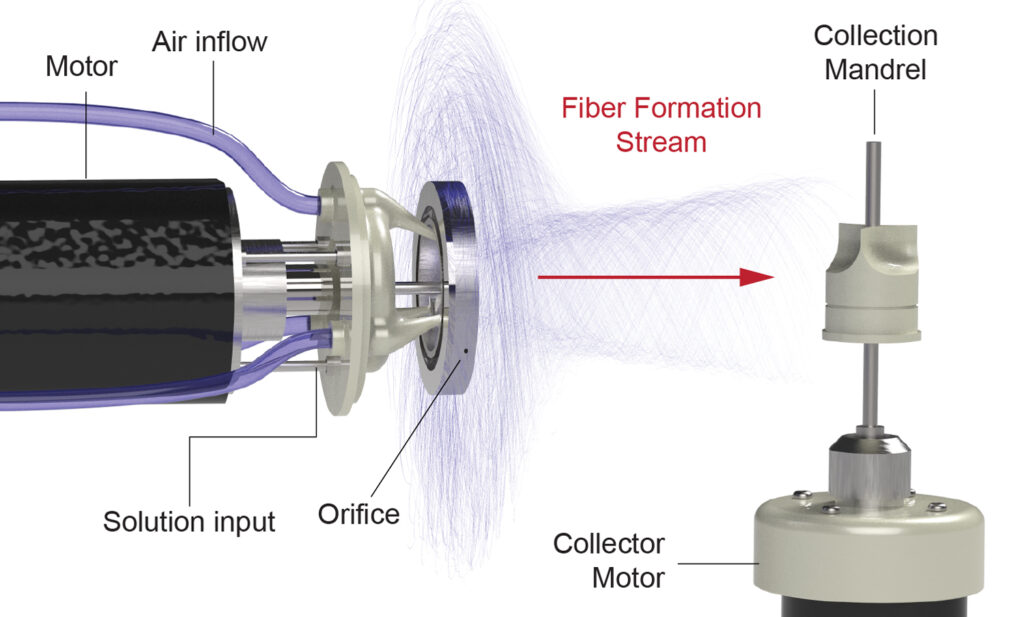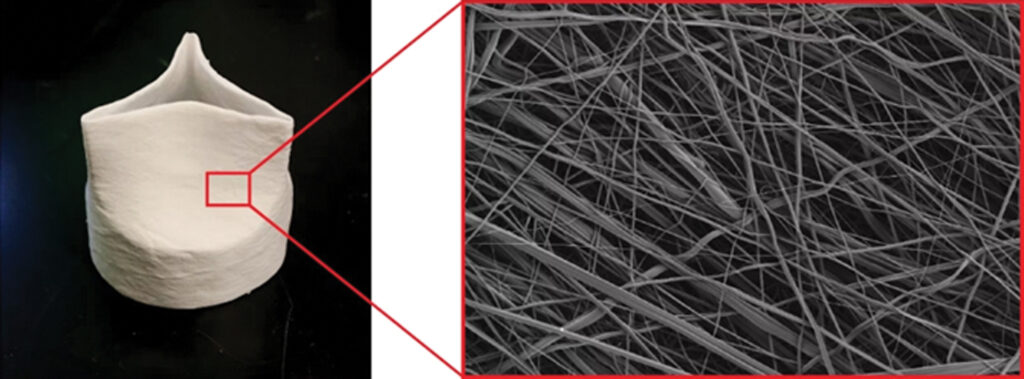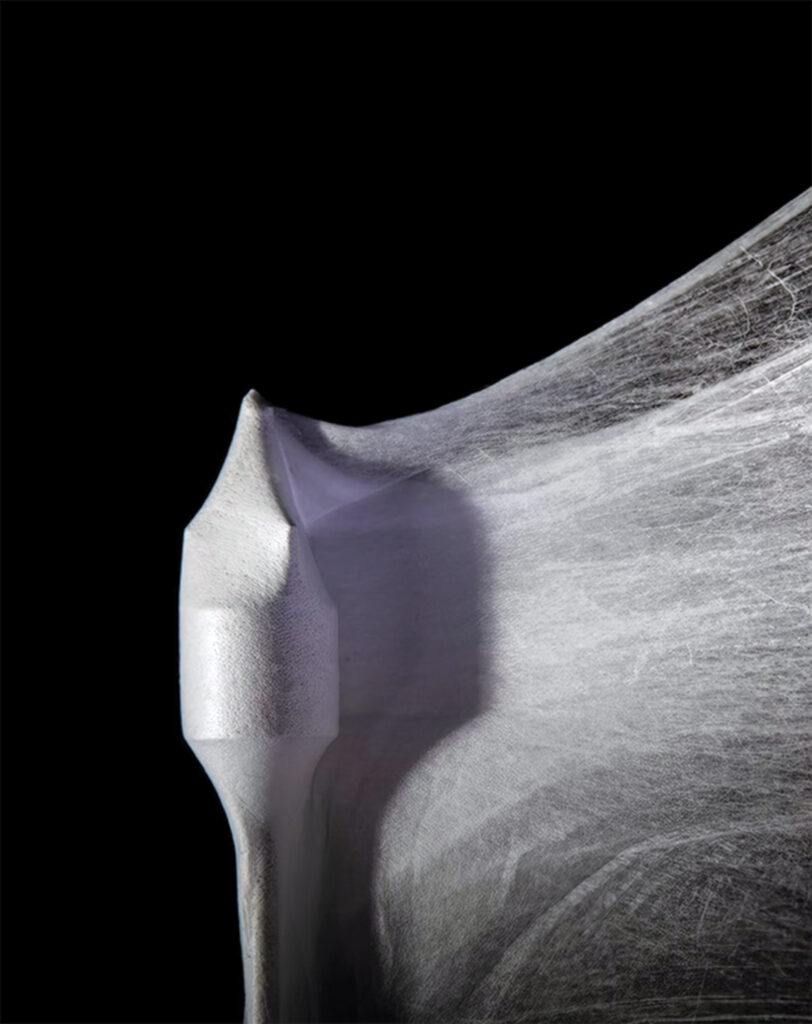

Researchers at the Wyss Institute and Harvard’s John A. Paulson School of Engineering and Applied Sciences (SEAS) are developing an implantable heart valve that grows with a child, called FibraValve. The concept would mean fewer invasive surgeries for children with damaged heart valves, for example from rheumatic heart disease.
FibraValve can be manufactured in less than 10 minutes using a new method called focused rotary jet spinning (FRJS), which allows the researchers to customize the shape and properties of the valve’s delicate flaps down to the nanoscale.
This new valve was readily colonized by living cells, both in vitro and in large animal model studies conducted by collaborators led by Wyss associate faculty member Simon Hoerstrup at the Wyss Zurich Translational Center in Zurich, Switzerland. This international collaboration was supported by Wyss Institute Project funding.
“Our goal is for the patient’s native cells to use the device as a blueprint to regenerate their own living valve tissue,” says associate faculty member Kevin Kit Parker, Ph.D., “but FRJS also has potential as a platform to fabricate other medical devices in the future.”

Parker and Hoerstrup’s quest to create a living, growing heart valve has been underway since 2014, and they produced their first synthetic heart valve, JetValve, in 2017. For the new FibraValve manufacturing process, they added streams of focused air to the polymer-extruding stream. This allowed them to improve the rate at which the polymer fibers were deposited and to easily adjust the resulting valve to the desired shape. The polymer also produced networks of micro- and nano-fibers that better mimicked the tissue structure of a human heart valve. They used a new, custom polymer material to improve the infiltration of living cells once the FibraValve is implanted. Called PLCL, this material is a combination of polycaprolactone (PCL) and polylactic acid (PLA). Previous studies had shown that PLCL lasts about six months when implanted into rats, is infiltrated by living cells and remodeled into functional tissue, and safely biodegrades.
The researchers’ work is described in the June 2023 issue of Matter.
 TEXTILES.ORG
TEXTILES.ORG


